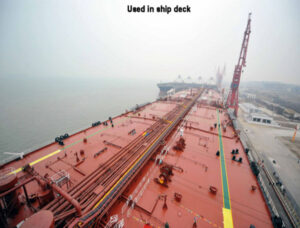As a manufacturer deeply involved in the polyurethane industry, SPC offers a full range of polyurethane adhesive solutions , ranging from one-component moisture-curing systems to two-component solvent-free systems, meeting the needs of diverse industries. Customers often encounter uneven adhesive drying during production , which can result in surface curing, under-curing, decreased adhesion, or air bubbles . Here are some common causes and solutions:
1. Common causes
Uneven coating thickness: Partially too thick will cause slow drying, while partially too thin may cause premature curing.
Poor environmental conditions: temperature is too low, humidity is too high, or air circulation is poor.
The substrate has different absorbency: porous substrates (such as wood and cloth) absorb quickly, while dense substrates (such as metal and glass) leave more residue on the surface.
Mismatched curing methods: Moisture-curing adhesives are difficult to fully react in low-humidity environments; heat-curing adhesives are not fully cured due to insufficient heating.
Uneven mixing/proportioning (for two-component adhesives): The ratio of components A and B is deviated or the mixing is insufficient, resulting in incomplete local reaction.
2. Solution
Control the coating amount : Use a scraper, roller or automatic dispensing equipment to maintain a uniform thickness of the glue layer.
Optimize the drying environment : maintain a temperature of 20-30°C, a humidity of 40-70%, and enhance air circulation. For heat-curing adhesives, ensure that the heating temperature and time meet the process requirements.
Improved process : Seal porous substrates first to prevent local absorption. Apply thin layers and cure multiple times instead of one thick coat.
Check the ratio and stirring : The two-component glue must be mixed strictly according to the ratio and stirred thoroughly with a stirrer to avoid "local unreaction".
Choose the right formula : Moisture-curing adhesives are suitable for humid environments, while heat-curing adhesives are suitable for continuous production. If you require a faster cure, you can choose a quick-drying adhesive or a custom formula.
3. Prevention Recommendations
- Establish standardized construction process (coating amount, curing temperature and humidity).
- Use automated dispensing/spraying equipment to avoid uneven manual operation.
- Regularly train operators to reduce quality fluctuations caused by process arbitrariness.
In one sentence ,
uneven glue drying is mostly caused by thickness, environment or ratio problems . The solution is to control process parameters + optimize environmental conditions + choose a suitable formula .
Advantageous solutions of SPC adhesives:
In actual production, uneven glue drying can lead to reduced bond strength, surface defects, and even reduced production efficiency. Common causes include inconsistent coating thickness, excessive humidity, poor ventilation, or unstable glue formulation.
Quick-drying formula: The optimized polyurethane system of SPC adhesive can maintain uniform drying in a wide range of temperature and humidity environments, significantly reducing unevenness caused by environmental fluctuations.
Excellent leveling performance: Even during manual or automated coating, SPC adhesives can quickly level out, avoiding local accumulation and uneven thickness.
Stable curing: The use of a highly active reaction system ensures a stable and consistent curing process, thereby achieving long-lasting bonding strength.
Strong adaptability: SPC offers a variety of dedicated models that can be customized according to customer equipment (spraying, rolling, scraping, etc.) and substrate characteristics, ensuring less rework during production.
Summarize
Uneven adhesive drying isn't a serious concern; the key lies in identifying the cause, optimizing the process, and selecting the right formulation. As a manufacturer deeply involved in the polyurethane industry, SPC not only offers a full range of adhesives, from one- to two-component , but also effectively addresses uneven drying issues through fast-drying formulas, excellent leveling, and stable curing technology. Whether working with wood, metal, plastic, or composite materials, SPC offers the optimal solution for every process and substrate, ensuring comprehensive improvements in bonding efficiency, product quality, and production stability.
Choosing SPC means choosing an efficient, reliable and professional polyurethane adhesive partner.




